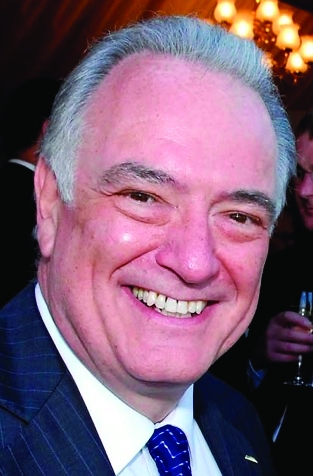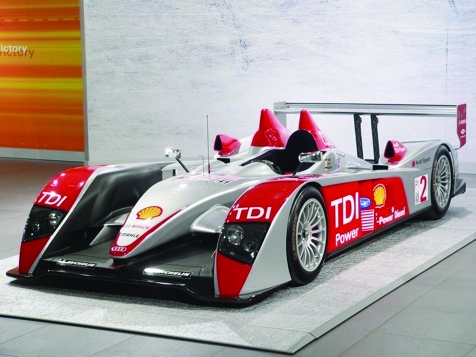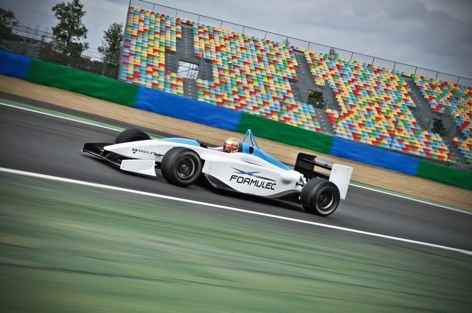
Chris Aylett
Chief executive, Motorsport Industry Association
A former Roosevelt Scholar, Aylett began his career as a sportscar driver, eventually becoming a team owner and race promotor; while also building an international sporting goods distribution group.
Having served as president of the Sports Industries Federation, Aylett became chief executive of the Motorsport Industries Association in 1998. In 2000, he initiated a UK government review energy efficient motorsport; three years later, he launched the world’s first international Low Carbon Motorsport conference.
The image of motorsport is one of blood and thunder; deafening noise, the smell of fuel and hot rubber; the dash and glamour of race days and playboy drivers. It isn’t one of cool, calculated engineering. But all of that may be changing; in fact, some would argue that it has to.
One of the loudest of those voices would probably belong to Chris Aylett. The veteran chief executive of the UK Motorsport Industry Association, celebrating 15 years in the post, Aylett is something of a paradox; a garrulous raconteur of the type that used to be known as clubbable, he is fond of telling stories against himself and declaring himself a dinosaur, yet for the past ten years he has been the driving force behind the annual Low Carbon Motorsport Conference.
The future of motorsport, Aylett believes, is firmly linked to the way it links itself to low-carbon technologies. It’s this, he said, that is the key to returning motorsport to the place where it has the most relevance to society in general, but from where it had slipped away over the years: as the R&D department of the mainstream automotive industry.
‘It’s a strange progression,’ he mused. ‘Back in the 1950s, when motorsport as we now know it was taking shape, we had a multiplicity of automotive marques, particularly in the UK: we had Alvis, Morris, Austin, Standard Triumph and so on, and these companies actively used motorsport to develop their cars. They had an R&D department — although they didn’t call it that — and they’d take four cars off the line, tune them up and go racing. They’d come back and say “You know, if you do this and this then they run faster or better”, and those changes would make their way onto the production cars.’
However, over the years, these marques were amalgamated with multinationals and R&D was moved overseas (‘Apart from Jaguar,’ Aylett noted) and that broke the link between R&D and motorsport. ‘Car companies’ motorsport budgets, if they had them, became subsumed into marketing; motorsport was an engineering entertainment that bolstered brand value and sold some cars, and that was it,’ he said.

This was the case throughout the 70s and 80s and well into the 1990s, and it only began to change when the automotive industry was forced to face up to its gas-guzzling, emissions-heavy ways. ‘Ten to fifteen years ago, all the automotive companies had to sign up to regulations to cut emissions, and at the same time, with a bit of effort, the MIA helped to position motorsport as the home of energy-efficient automotive.’ Although it might seem counter-intuitive to outsiders, motorsport is in fact all about efficiency, Aylett argues — everything depends on extracting the largest possible amount of energy from every litre of fuel, and using it to make a vehicle go faster and further.
‘Automotive signed up to pretty stunning commitments, but they really had no idea how they were going to make them,’ Aylett said. ‘They looked to their supply chain, but none of them had any expertise in emissions reduction. It was our good fortune that we in motorsport were able to step up and offer that expertise and technology at the same time as we had to actively start looking for diversification of income streams, because sponsorship had become so much harder to secure.’
“There are so many alternative power trains, and every one of those is a prototype opportunity that motorsport can investigate
The current climate in the automotive sector is well-suited to the involvement of motorsport, Aylett believes. ‘Looking to the future, they have so many alternative power trains to look at — different combinations of internal combustion engines and electrical systems, hybrids, pure electric, hydrogen power and doubtless some we haven’t even thought of — and every one of those is a prototype opportunity, and here we are in motorsport, looking to engage with them to investigate those.’
For Aylett, using new technology in motorsport is a win-win situation, as it also helps to improve racing and add an extra frisson of interest for the spectator — something which is at the forefront of the motorsport industry’s attention, with concerns over the sport’s ageing fanbase and ability to attract young spectators. ‘Something definitely happened over the last 20 years, and the sport became less of a spectacle,’ he said. ‘And really, Le Mans deserves a lot of the credit for trying to change that.’
The venerable 24-hour race was at the forefront of allowing constructors to try out new technologies; an opportunity which Audi, in particular, was keen to grasp. ‘At my first Low Carbon Racing conference ten years ago, Audi Sport’s head of engine technology, Ulrich Baretzky, stood up and said he was going to win Le Mans in a diesel car. The response was “You’re going to to what?” I swear I heard laughter in the room that day; I was probably one of the people laughing.’
But Baretzky was as good as his word, and in 2006 the Audi R10 car, powered by his V12 TDI engine, duly won Le Mans. ‘They took the torque that diesel engines can develop and used it to outperform the gasoline engines, and that pretty much changed the perception of diesel engines overnight. Suddenly turbo-diesel was pretty cool. It proved that motorsport could be relevant to a new audience, and that it could be effective at investigating new areas.’

Similar things were happening in Formula 1, with the introduction of kinetic energy recovery systems (KERS) in 2009. ‘Lewis Hamilton could press a button and overtake someone, exactly like you might in a computer game. It gave audiences a new insight into what electric motors can do. It’s just a shame that they didn’t call the cars hybrids, which is what they were: it might have done a great deal for hybrids.’
The motorsport industry is about to take another step into the future with the introduction next year of an all-electric single-seat car racing series on street circuits, Formula E. Aylett is confident that this will attract and hold a new audience, and cites his experience with the electric motorbike racing on the Isle of Man, TTxGP and TTZero. ‘I went to the first run of an electric bike at the Isle of Man,’ he reminisced. ‘I thought it was a complete dead duch when I first heard about it; daftest thing I ever heard. But when I saw it the hairs stood up on the back of my neck. On one side of the guardrail were the gasoline engines, sounding — to my mind — fabulous. But the other side was packed with young people surrounding these cool, completely silent machines with LEDs and touchscreens, which take off with a cloud of dust and no sound at all. Like magic. And all of a sudden the lack of noise seemed completely irrelevant. I swear to goodness I saw the future.’




Glasgow trial explores AR cues for autonomous road safety
They've ploughed into a few vulnerable road users in the past. Making that less likely will make it spectacularly easy to stop the traffic for...